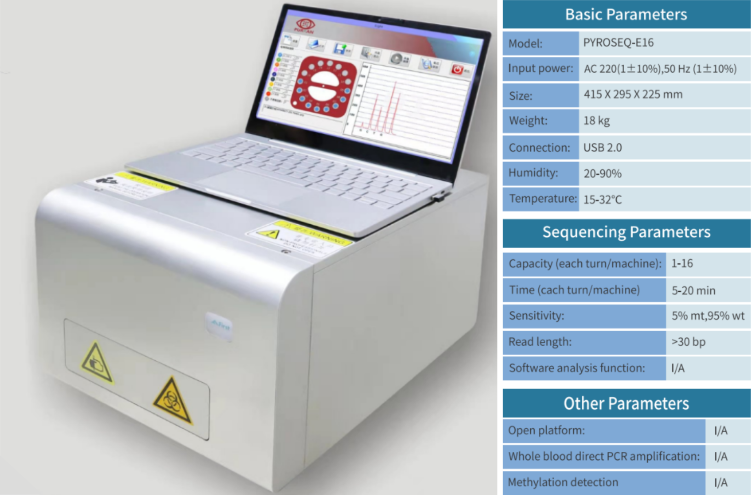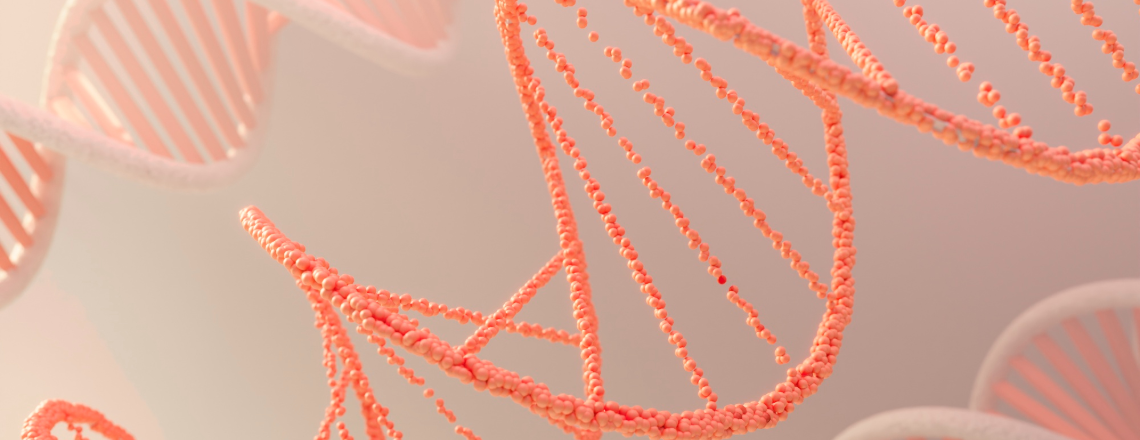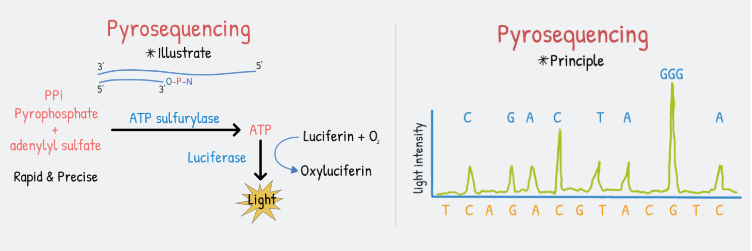Pyrosequencing
Published Jan. 22, 2024
By Hopkins Medtech
What is Pyrosequencing?
Pyrosequencing is a DNA sequencing technique that detects light emitted from nucleotide bases. It’s based on the “sequencing by synthesis” principle, which involves detecting the nucleotide incorporated by a DNA polymerase.
What are the steps of pyrosequencing?
1. DNA Fragmentation: The DNA of interest is fragmented into smaller pieces using various methods such as enzymatic digestion or sonication.
2. DNA Preparation: Adaptors or primers are added to the ends of the fragmented DNA. These adaptors or primers serve as starting points for amplification and sequencing.
3. Amplification (PCR): The DNA fragments are amplified using PCR (Polymerase Chain Reaction) to create multiple copies of the DNA sequences. This step is crucial for generating sufficient material for sequencing.
4. Solid Support Attachment: The amplified DNA fragments are immobilized or attached to a solid support surface, such as beads or a flow cell. Each fragment is spatially isolated to enable individual sequencing reactions.
5. Pyrosequencing Reaction: The sequencing reaction takes place by sequentially adding individual nucleotides (A, T, C, G) one at a time into the reaction mix.
6. Nucleotide Addition and Pyrophosphate Release: As each nucleotide is added, a reaction occurs involving DNA polymerase, luciferase, and other enzymes. If the added nucleotide matches the template DNA, it is incorporated into the growing DNA strand, releasing pyrophosphate as a byproduct.
7. Light Emission (Chemiluminescence): Pyrophosphate release triggers a series of enzymatic reactions leading to the generation of light (chemiluminescence). The intensity of light produced is proportional to the amount of pyrophosphate released.
8. Detection and Recording: The light emitted during the pyrosequencing reaction is detected by a camera or photomultiplier tube. The sequence of nucleotides is determined based on the order of nucleotide additions and the intensity of the emitted light.
9. Base Calling and Data Analysis: Bioinformatics software analyzes the raw data obtained from the sequencing reactions, recording the sequence of nucleotides based on the detected signals and intensities.
What can pyrosequencing do?
Detection of Gene Mutations:
Single Nucleotide Polymorphisms (SNPs): Pyrosequencing can identify SNPs, which are variations in a single nucleotide within the DNA sequence. This is valuable in genetic research, clinical diagnostics, and personalized medicine to detect variations associated with diseases or drug responses.
Insertions and Deletions (Indels): It’s also effective in detecting small insertions or deletions in the DNA sequence that might cause genetic disorders or influence disease susceptibility.
Drug Resistance Mutations: In clinical settings, pyrosequencing is used to detect specific mutations in microbial genes associated with drug resistance, aiding in selecting appropriate treatments.
Detection of DNA Methylation:
SPyrosequencing can assess DNA methylation patterns, which play a crucial role in gene regulation and epigenetic modifications.
Quantitative DNA Methylation Analysis: It enables precise quantification of methylation levels at specific CpG sites, offering insights into epigenetic changes associated with diseases like cancer and developmental disorders.
Epigenetic Studies: Researchers use pyrosequencing to analyze methylation patterns in promoter regions or regulatory elements to understand their impact on gene expression and cellular functions.
Identification of Microbial Species:
Microbial Ecology and Diversity: Pyrosequencing is pivotal in studying microbial communities, analyzing diversity, and identifying species present in environmental samples like soil, water, or the human microbiome.
Metagenomics: It helps characterize and catalog microbial genomes, enabling the discovery of novel species, understanding interactions within microbial communities, and studying their roles in health and disease.
Clinical Microbiology: In clinical settings, pyrosequencing aids in identifying and profiling pathogens in infections, tracking outbreaks, and understanding microbial resistance patterns.
What do we provide?
We present a new small size pyrosequencing equipment from First Biosciences, the best sequence platform for clinical examination and scientific research!



